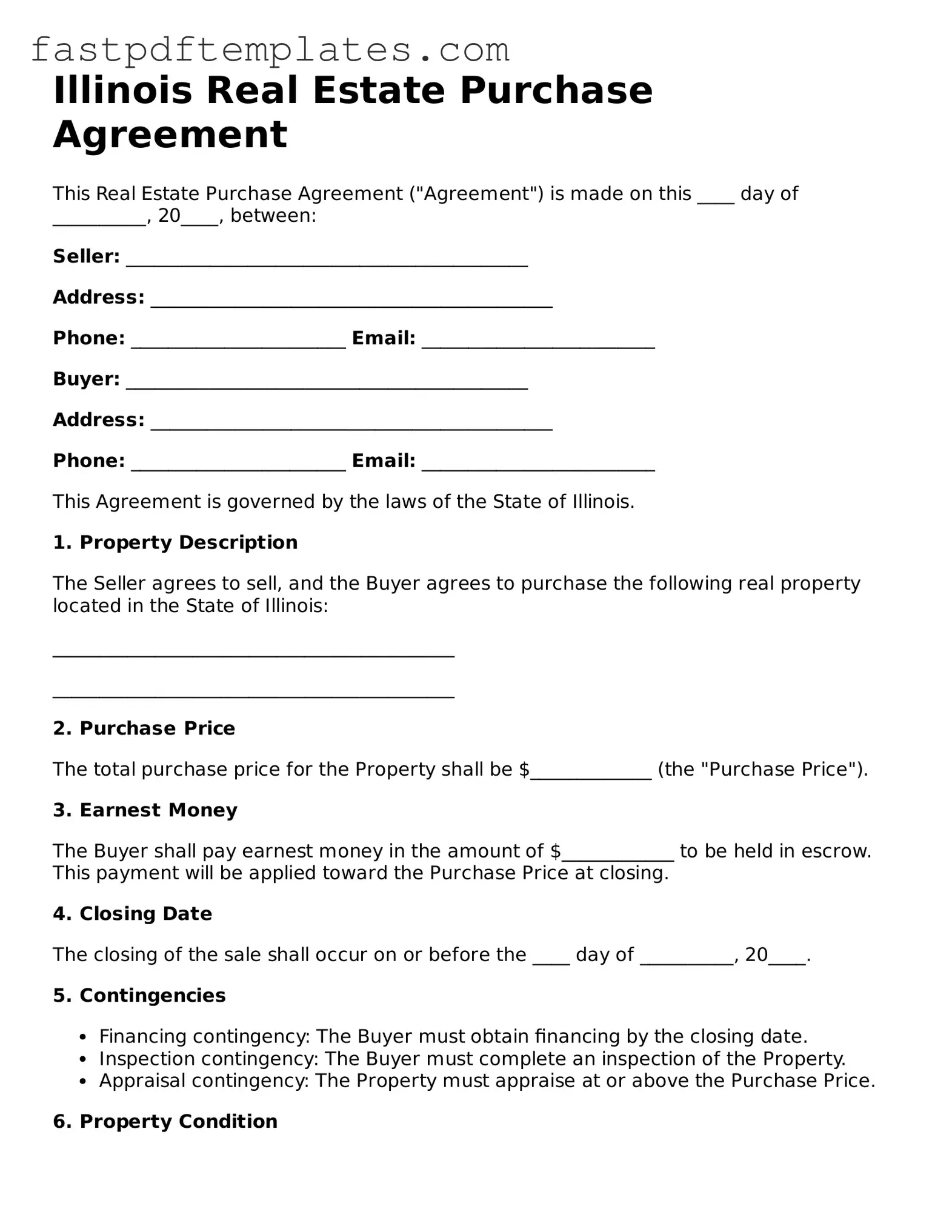Illinois Real Estate Purchase Agreement
This Real Estate Purchase Agreement ("Agreement") is made on this ____ day of __________, 20____, between:
Seller: ___________________________________________
Address: ___________________________________________
Phone: _______________________ Email: _________________________
Buyer: ___________________________________________
Address: ___________________________________________
Phone: _______________________ Email: _________________________
This Agreement is governed by the laws of the State of Illinois.
1. Property Description
The Seller agrees to sell, and the Buyer agrees to purchase the following real property located in the State of Illinois:
___________________________________________
___________________________________________
2. Purchase Price
The total purchase price for the Property shall be $_____________ (the "Purchase Price").
3. Earnest Money
The Buyer shall pay earnest money in the amount of $____________ to be held in escrow. This payment will be applied toward the Purchase Price at closing.
4. Closing Date
The closing of the sale shall occur on or before the ____ day of __________, 20____.
5. Contingencies
- Financing contingency: The Buyer must obtain financing by the closing date.
- Inspection contingency: The Buyer must complete an inspection of the Property.
- Appraisal contingency: The Property must appraise at or above the Purchase Price.
6. Property Condition
The Buyer accepts the Property in its current condition, referred to as "as-is." The Seller is not responsible for any repairs.
7. Possession
The Buyer shall take possession of the Property on the closing date, unless otherwise agreed in writing.
8. Signatures
By signing below, both parties agree to the terms outlined in this Agreement.
Seller's Signature: __________________________ Date: _____________
Buyer's Signature: __________________________ Date: _____________
This Agreement constitutes the entire agreement between the parties concerning this purchase and supersedes all prior agreements.
Both parties acknowledge that they have had the opportunity to obtain independent legal advice before entering into this Agreement.
